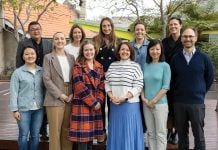The annual Reconciliation ceremony held at the South Yarra campus is a significant moment in the School’s calendar, enabling students and staff to pause and acknowledge the enduring cultures, histories, and contributions of First Nations peoples.
More importantly, it provides an opportunity to educate, to listen, and to commit ourselves – both individually and collectively – to foster respect, understanding, and truth-telling in our community and beyond.
Organised by Shane Evans, First Nations Program Manager, this year, we were joined by special guests from the First Nations community and from Melbourne Girls Grammar, as well as representatives from Grimwade House.
Here are some highlights.
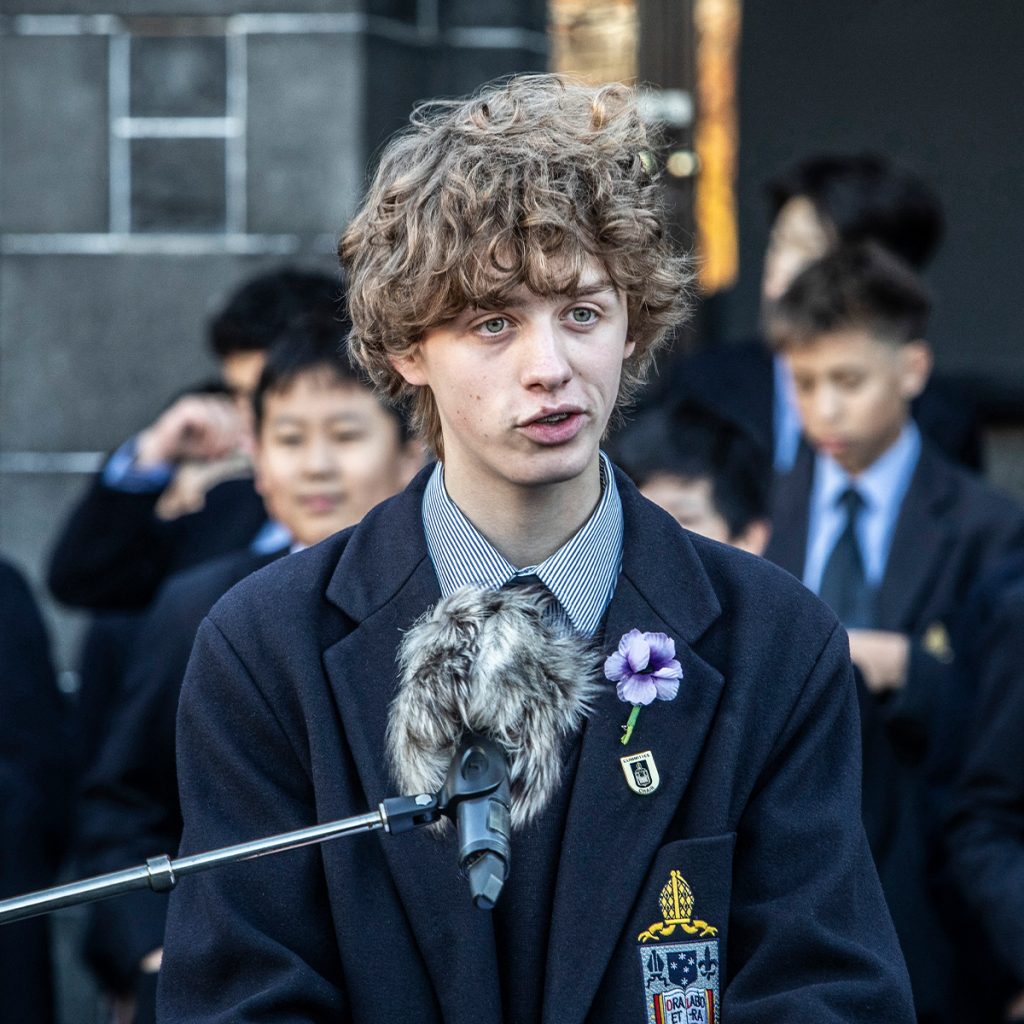
“Wominjeka”
Year 11 student, Edgar Stirling, Co-Chair of the [student led] Reconciliation Committee opens the ceremony.

Welcome to Country
Wurundjeri Senior Elder, Aunty Joy Murphy, welcomes everyone to the traditional lands of the Wurundjeri, Woiwurrung people.
“I am so proud to have the privilege and honour to welcome you to a part of my father’s traditional country.
“We all come from our own place. Each of us has our own identity…“When my father served in WWI with his mates, there was no question of colour of skin or where you came from, but the fact that they were there fighting for all of us, today and tomorrow and forever, so that we could have what we have today, and that, of course, is peace, freedom and almost equality…
“So, if in my lifetime, we can edge a little bit more towards further equality for everyone, then I most certainly have lived out the legacy of my father.”
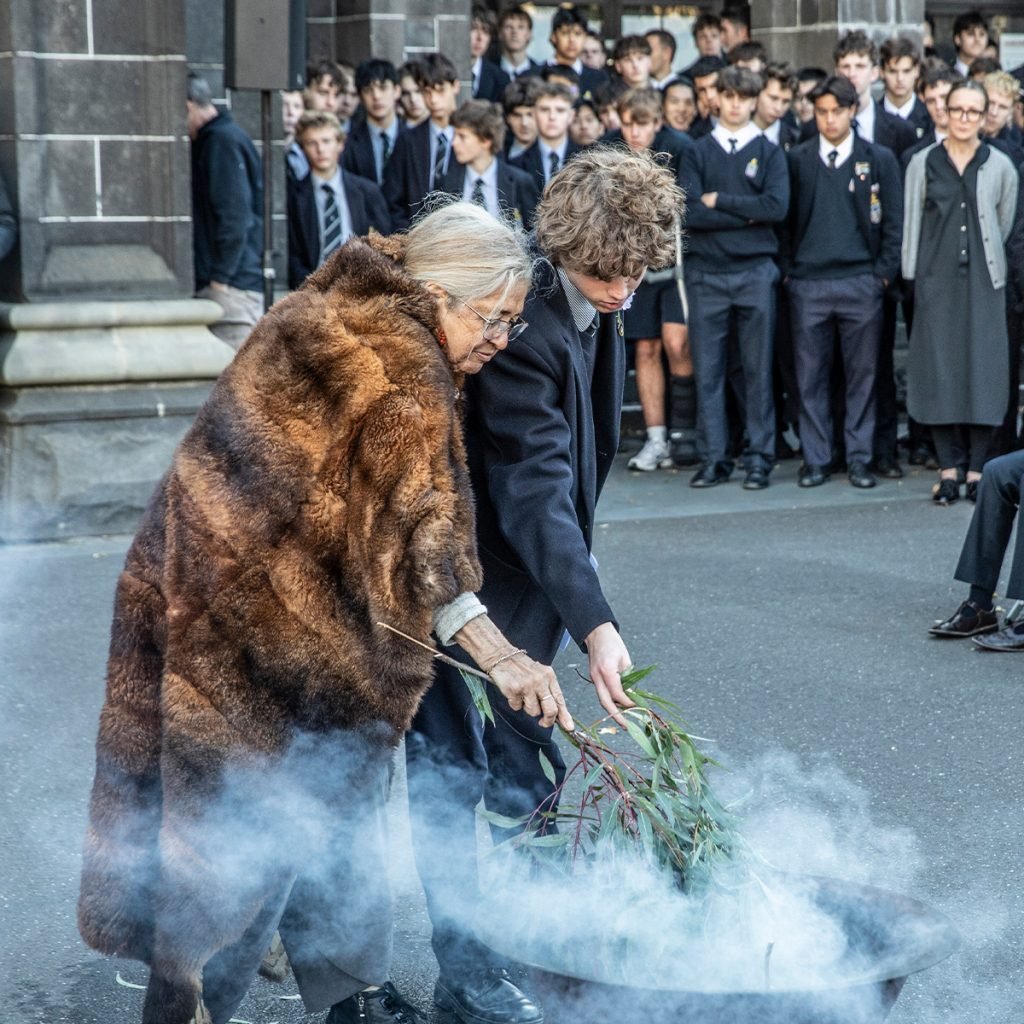
Smoking and Cleansing Ceremony
At the (Waru) fire, Aunty Joy burns native eucalypt leaves with assistance from Edgar as part of the Smoking and Cleansing ceremony.
“This ceremony reminds us of what happened in the past, but it also reminds us that we go forward together, as one.”
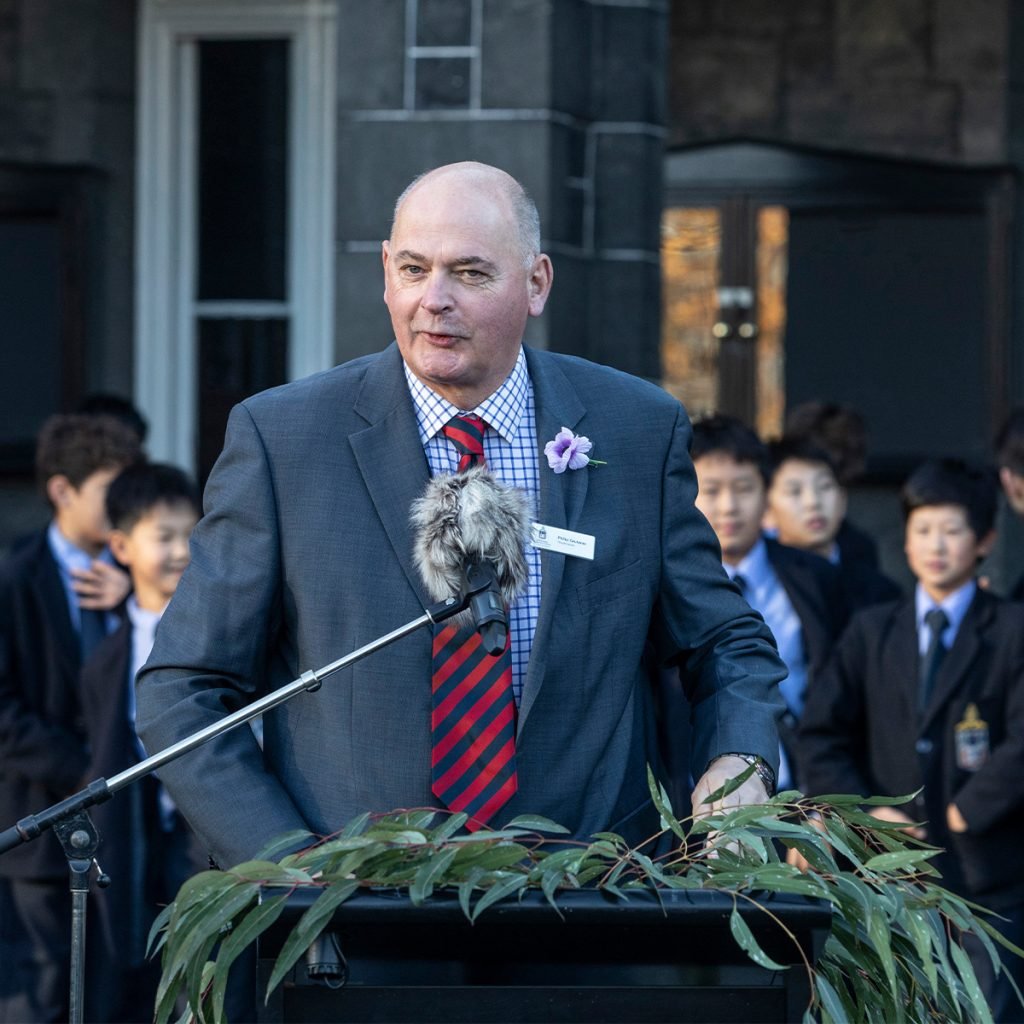
Headmaster’s Address
Philip Grutzner, Headmaster, reminds us that today is an important time for reflection, remembrance and reconciliation, and today we are acknowledging the past and justices and the ongoing impact on First Nations communities around the country.
“It was 25 years ago when the First Nations flag first flew on the Witherby Tower flagpole…we have made progress but we are still learning.

Messages through music
“The future doesn’t exist. You young people get to make it so make it better.”
So says Australian rock royalty Shane Howard as he goes on to tell powerful First Nations stories through his songs: Mannalargenna and Solid Rock, accompanied by Uncle Ron Murray, a Wamba Wamba Man on the Yidaki (Didjeridoo) and Matthew Maruff, Director of Learning and Research, on drums.
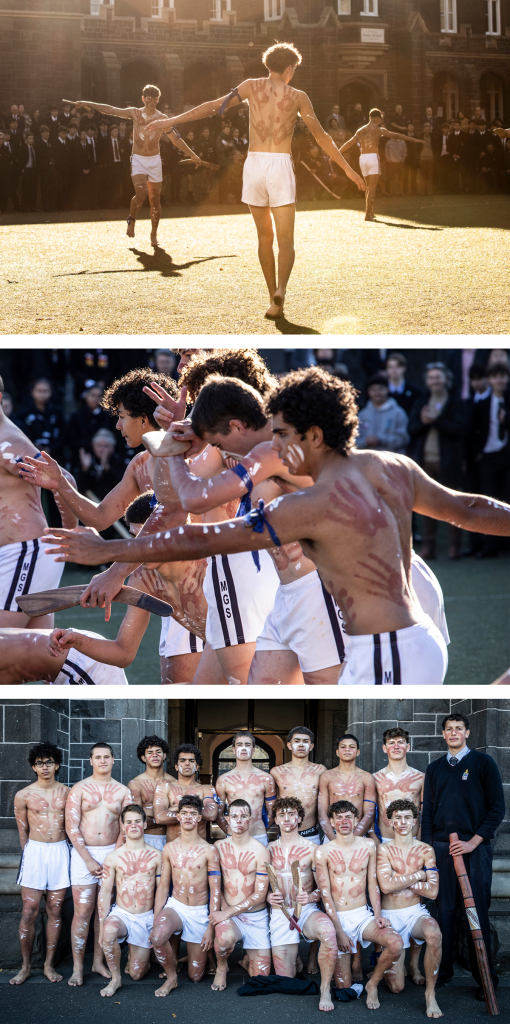
Traditional dances
Year 9 – 12 First Nations students perform three traditional dances.
Bangerang Noongar Mutti Mutti boy Clinton Edwards plays the Yidaki (Didjeridoo) and says:
“I come before you today with these 14 Aboriginal boys at Melbourne Grammar from across Australia. We represent and come from different mobs, different families, but we all treat each other like brothers…
The first dance is just about all of us boys …coming [together] as one and just being one big mob.
The second dance is about the older boys teaching the young ones like we’ve always done, and how it’s always been – older people teaching young ones and everyone learning.
Then the last one is just for these boys to show who they are, where they’re from, who their family is, and…their potential.
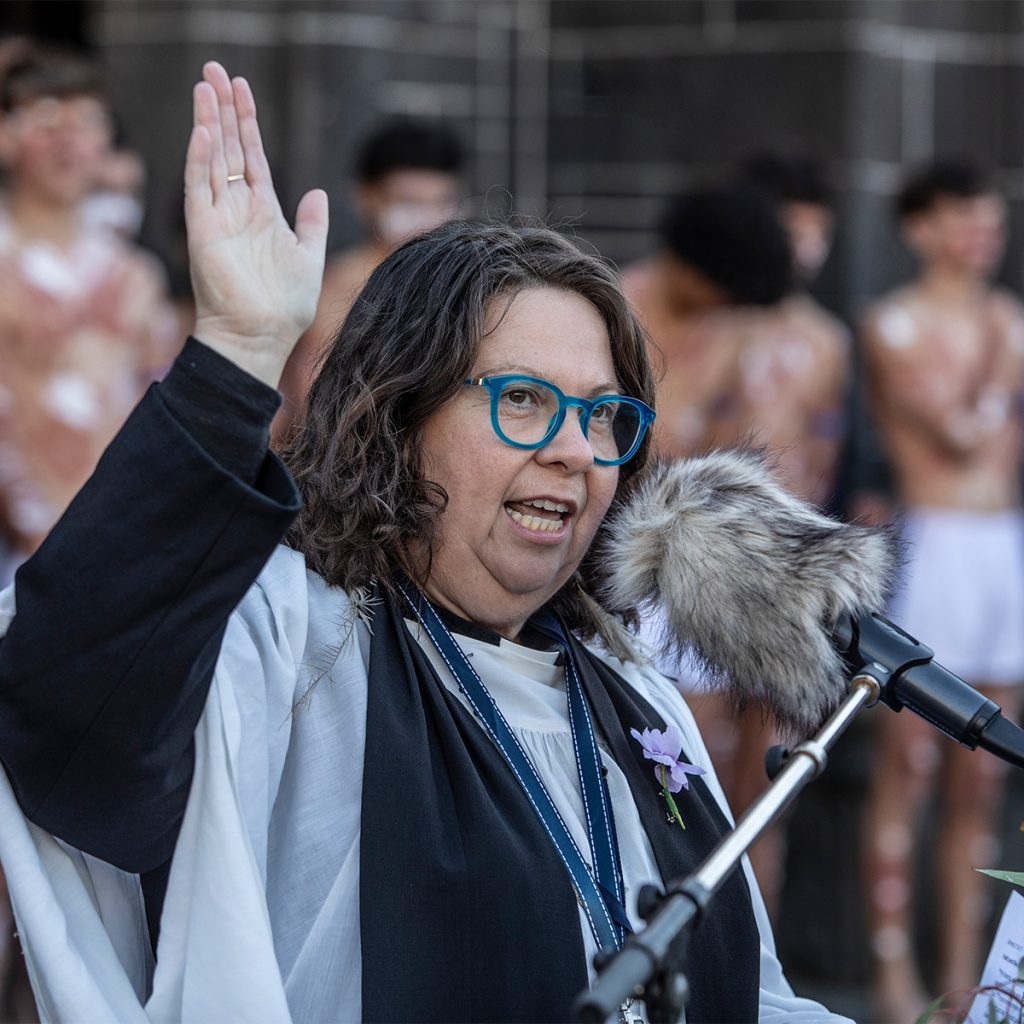
A final blessing
Rev’d Helen Dwyer, a proud Ngarrindjeri woman and Grimwade House and Wadhurst Chaplain says:
“As we stand on this sacred land, may we walk gently with those who came before us, honouring the truth of our history and the depth of our shared story, may the God of justice stir in us a spirit of humility and courage to listen with compassion, to speak with honesty and to act with love as we bridge the now to the next.”

